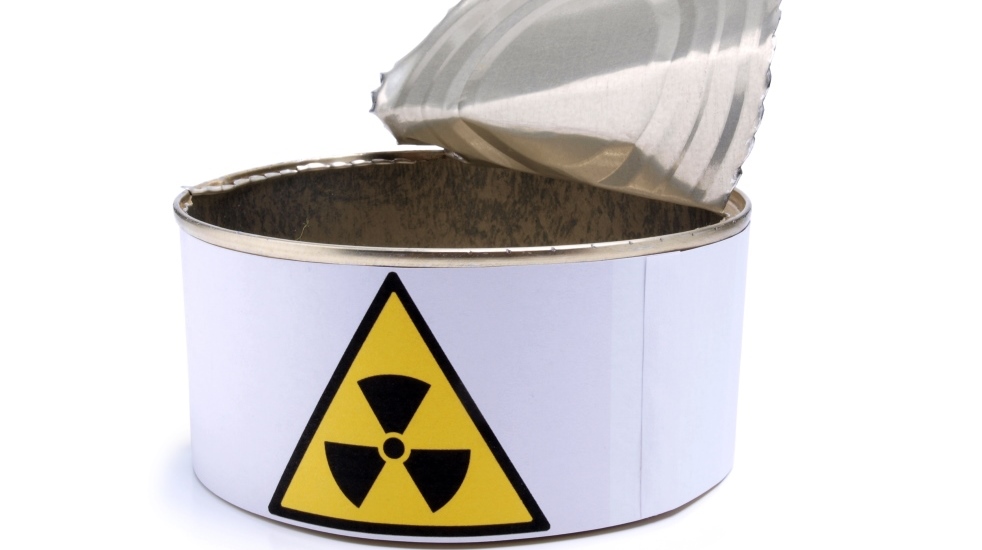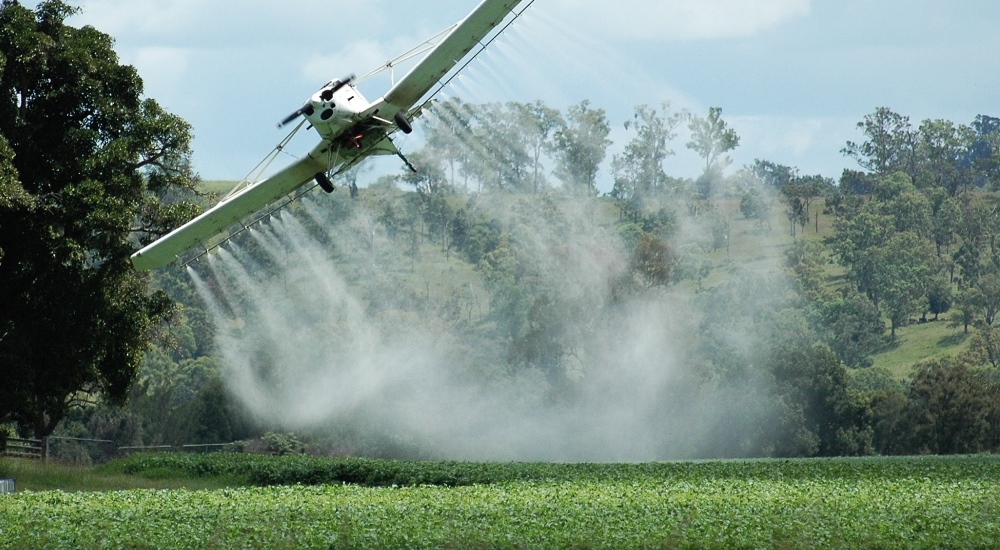Glyphosate Irradiation & Fumigation
Organic standards have a zero tolerance for fumigation, so by buying organic food you can be sure you are avoiding fumigated food and any possible adverse health effects.
Food from glyphosate contaminated food, irradiated and fumigated seems wrong. The idea conjures up images of frankenfoods that glow in the dark and have radioactive half-lives of just about forever. On second glance, well, the foods don’t glow in the dark or become radioactive, but the news isn’t great. Below we look at how glyphosate, irradiation and fumigation changes the structure and nutrients of our food and, ultimately, what it can do to us when we eat

What is Glyphosate contaminated food
Glyphosate has been and is still being used to control weeds and improve plant production and yields. Glyphosate is known to cause cancer, with large court cases and payouts as a result of related deaths. So how can you be sure your food is not contaminated. Well you can't unless testing is done or unless you buy organic food.
What is food irradiation
Food irradiation is when food is exposed to radiation from gamma rays, X-rays and accelerated electrons. These types of radiation are called ionising radiation which means that the blast from the radiation knocks the electrons from the atoms and molecules and turns them into ions.
The radiation waves pass through the food without over-heating or changing the appearance of the food. The reason why irradiation doesn’t make food radioactive is because the rays haven’t got enough energy to split an atom.
When a food is irradiated, the molecular structure changes to alter the food’s DNA. It means that the normal things that happen to food can’t happen anymore. That’s things like microbes can’t make the food go rotten, insects can’t spoil the food, moulds can’t grow and the fruit can’t naturally ripen.
The reason why food is irradiated is partly to do with this, because it means that the food lasts longer on the shelf. The other reason is because irradiation kills insects and bacteria. In Australia, some foods are irradiated when they are imported into the country.
What foods are irradiated in Australia
Since 2001, herbs, spices, some herbal infusions and teas, peanuts, almonds, cashews and pistachios are irradiated in Australia. Since 2002, nine tropical fruits have also been irradiated and these are: breadfruit, carambola, custard apple, litchi, longan, mango, mangosteen, papaya and rambutan.
FSANZ (Food Standards Australia and New Zealand) is currently considering the irradiation of persimmons.
What are the main concerns
The main problem is that irradiation is such a new thing that we’re not sure what it does to us. Studies need to be decades long before any certain conclusions can be formed.
All studies so far have been short-term and are not really scientifically proven. One study found that an irradiated diet produced abnormal cells, but it was disregarded when critics found that the sample size of cells were too small. Another test-tube study came back showing that irradiation caused changes in chromosomes and was actually toxic to cells, but was also disregarded when the scientists couldn’t rule out other causes.
What is known is that the new molecular structure of the food causes what is called ‘radiolytic by-products’. These chemicals are also called cyclobutanones (2-TCB, 2-TDCB and 2-DCB). Tests on rats found that those rats that were injected with a known carcinogen and 2-TCB were three times more likely to develop colon cancer. So, even on these preliminary findings, it doesn’t look good.
Even more worrying, in 2009 about 90 cats in Australia developed neurological problems and 30 died after being fed a dried cat food that was irradiated when it was imported from Canada. After that, irradiation was banned for cat food. Even though this horrible thing happened, irradiation is still allowed for food for human consumption. It really makes you wonder what is being done to our food.
Although irradiation kills most bacteria in food, it also kills the good bacteria such as the probiotics. Irradiation also causes food to lose vitamins, particularly vitamins A, B1, E and K.

How to avoid irradiated food
The Australian Organic Standard bans irradiated foods. So if a food is certified organic then you can be pretty sure that it has not been irradiated.
Likewise, if a product is made in Australia using only Australian ingredients then we can be pretty sure that it has not been irradiated too.
It is imported foods and ingredients that we need to be wary of so this is another great reason to eat and choose Australian, locally grown and organic foods.
How is it labelled
Irradiated food, or food that contains some parts of irradiated food, has to be labelled. The label has to state that the food was ‘irradiated’ or ‘treated with ionising radiation’. Some labels, particularly herbal tea products, say the food was ‘treated with ionised electrons’. This is a tricky way of saying that the food was irradiated, because you have to know that ‘ionised electrons’ is just another way of saying ‘irradiated’.
With unpackaged food, like loose fruit, there has to be a sign nearby that says the food was irradiated. Retailers can also use the international symbol of the radura. The radura is a green circle with a stylised plant in its centre. The top half of the circle is dashed with radiating beams coming out from it. The symbol alone isn’t really very clear. If you didn’t know, it looks like a nice little plant growing away with beams happily radiating out over the top of it.

Another thing to be wary of is that irradiated herbs are not labelled when they are used for therapeutic or medicinal purposes, because the FSANZ does not classify them as food products.
What is fumigation
Imported food or food-derived products have to go through the Australian Quarantine and Inspection Service (AQIS). Certain foods are fumigated with methyl bromide that has been found to be toxic to animals and humans. The other thing about methyl bromide is that it is classified by the Australian Government as ozone depleting. Since 2005, AQIS are the only agency in Australia that is allowed to use methyl bromide.
For more information:
- For more information on what foods Food Standards Australia has approved for irradiation and a report outlining the planned irradiation of 12 specific fruits and vegetables (including apple, apricot, cherry, nectarine, peach, plum, honeydew, rockmelon, strawberry, table grape, zucchini and squash), please visit http://www.foodstandards.gov.au/consumer/foodtech/irradiation/Pages/default.aspx
- UK-based, The Food Commission, is Britain’s leading independent watchdog on food issues. Here you can learn more about the health risks associated with food irradiation, how the technology can be mis-used, socio-economic costs and environmental impacts. See: http://www.foodcomm.org.uk/campaigns/the_campaign/
- US-based Public Citizen and The Center for Food Safety presented a well-researched report on irradiation called Hidden Harm. You can find it at: www.centerforfoodsafety.org/wp-content/uploads/2010/10/HiddenHarm.pdf
- The National Pesticide Information Center of America has an interesting fact sheet on the fumicide methyl bromide at: http://npic.orst.edu/factsheets/MBgen.pdf
